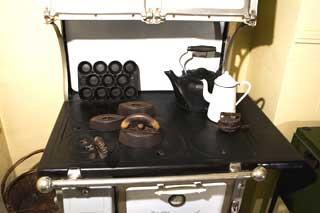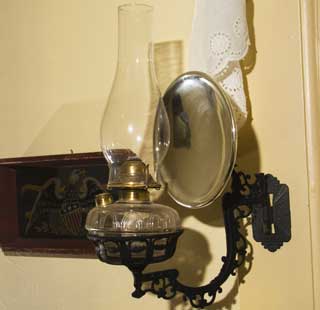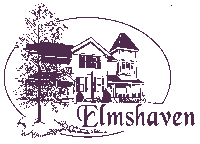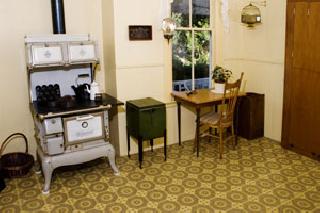The Kitchen
East of the dining room is the kitchen. The short hall connecting the rooms has a door on the right to the pantry, with its work area for food preparation, and its cupboards. To the left is the walk-in dish-storage area with a sink for washing dishes. The kitchen beyond is a modest-sized room and has as its chief equipment a wood-burning stove, which originally included a water coil connected to a forty-gallon (151.4- liter) water tank - the hot water supply to the house. A small worktable and a wall ironing board complete the kitchen furnishings.
Off the kitchen to the south is a narrow porch. To the north the rear entrance to the home opens into a small room known as the "scullery." The long sink on one side was used for washing the kettles and scrubbing vegetables from the garden. There is work space and undersink cupboards for cooking utensils and equipment.
From the back entrance is a narrow stairway to the rock-walled cellar below (now closed to the public), with its storage for fruit and vegetables, shelves for canned fruit, olive barrel, and screened milk-cooling cupboard. The outside cellar door gave ready access. Another door from the back entrance opens to the narrow stairway to Ellen White's writing room above.
Faithful, dedicated women filled the several positions in the well-ordered household. Ellen White valued her domestic and office staff. Of her cook she wrote: "I prize my seamstress, I value my copyist, but my cook, who knows well how to prepare the food and sustain life and nourish brain, bone and muscle, fills the most important place among the helpers in my family." - Testimonies, Volume 2, page 370; also quoted in Counsels on Diet and Foods, page 251.
 |
Top of stove in Kitchen, showing muffin pan, kettles and flatirons. |
 |
Glass oil lamp in cast iron wall bracket, in kitchen. |

